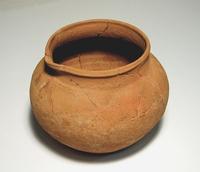Basque Ceramics in the Middle Ages (VII.-XIII. centuries)

A group of researchers from the UPV/EHU has analyzed several sites in Alava and Bizkaia to study Basque ceramics. Ceramics is a taxonomic tool (chronological indicator) and a hermeneutic tool (historical document). But if you want to turn ceramics into an element of knowledge of history, the first thing to do is to turn it into a specific chronological indicator. That is, its exact dating. Only once obtained, and in combination with other trace materials, can information be obtained from ancient societies.
In fact, researchers have developed a systematization model to classify ceramics. These deposits are the VIII. and XIII. have stratigraphs of centuries and are very important from the point of view of ceramic studies. Thus, a system of classification and characterization of ceramics found in these contexts has been developed through a three-level study. These levels include technological, functional and morphological criteria.
Once the systematization of the ceramic corpus has been completed and ceramic quantified, all the material has been classified from the diachronic point of view, that is, its evolution over time. Thus, in addition to the possibility of visualizing the chronological sequences of ceramic productions, its presence has been observed over the centuries and its use. In short, the key is to identify the reference groups, or what is the same, the ceramic productions that were made at a certain time and geographic location.

Finally, we investigated how production was organized and disseminated. Production models are closely related to expansion models -- in our case with local, regional and interregional scale. Laboratory archaeometric studies (petrographies, X-ray diffraction mineralogy and chemical studies) have been necessary for their determination. In addition, studies have been carried out to locate the production centers from the aforementioned archaeological studies, the archaeological evidence found in some deposits and the written sources.
In any case, knowledge of the location of production centres should be understood as a starting point for obtaining historical knowledge through ceramics. With this information you can obtain information from the human groups that manufactured and used ceramics, thus completing the human history of it.





